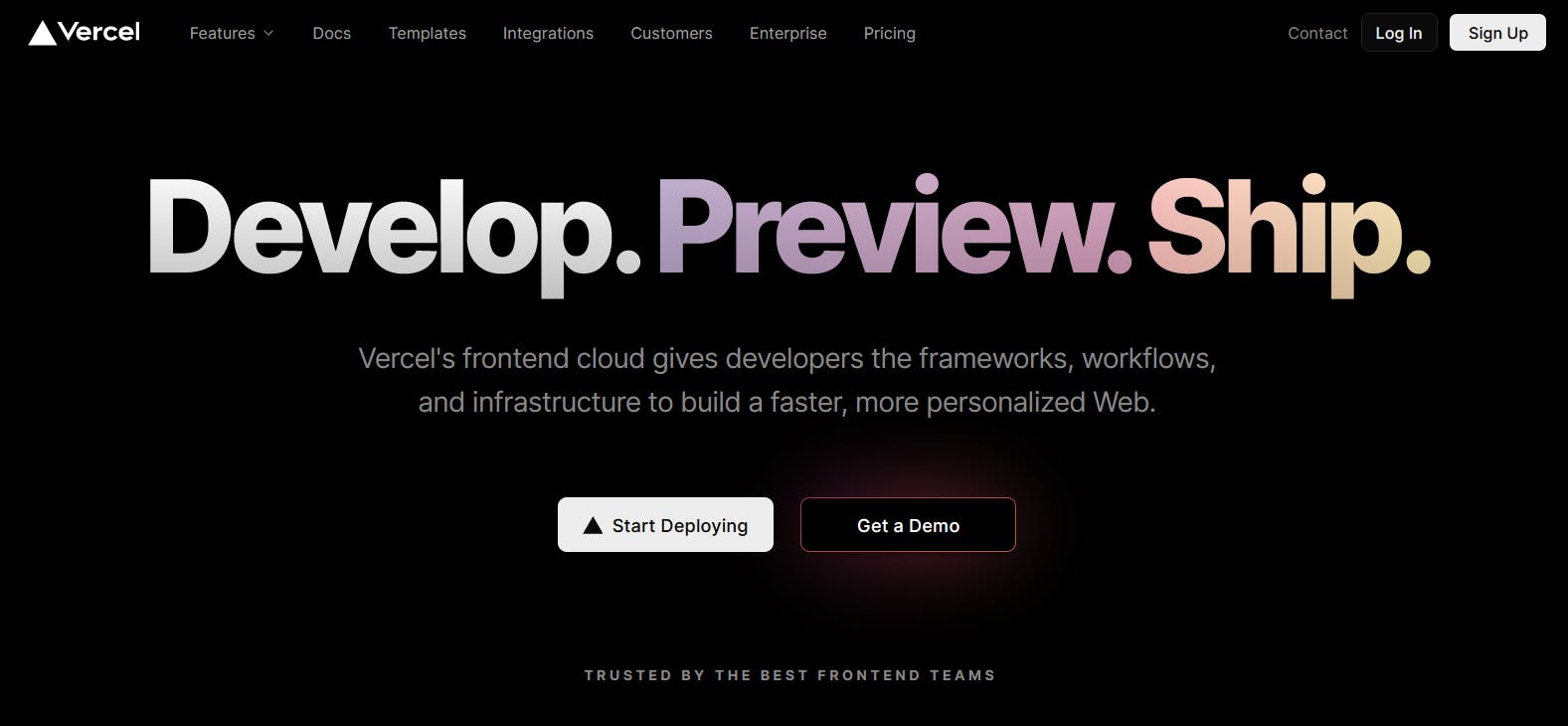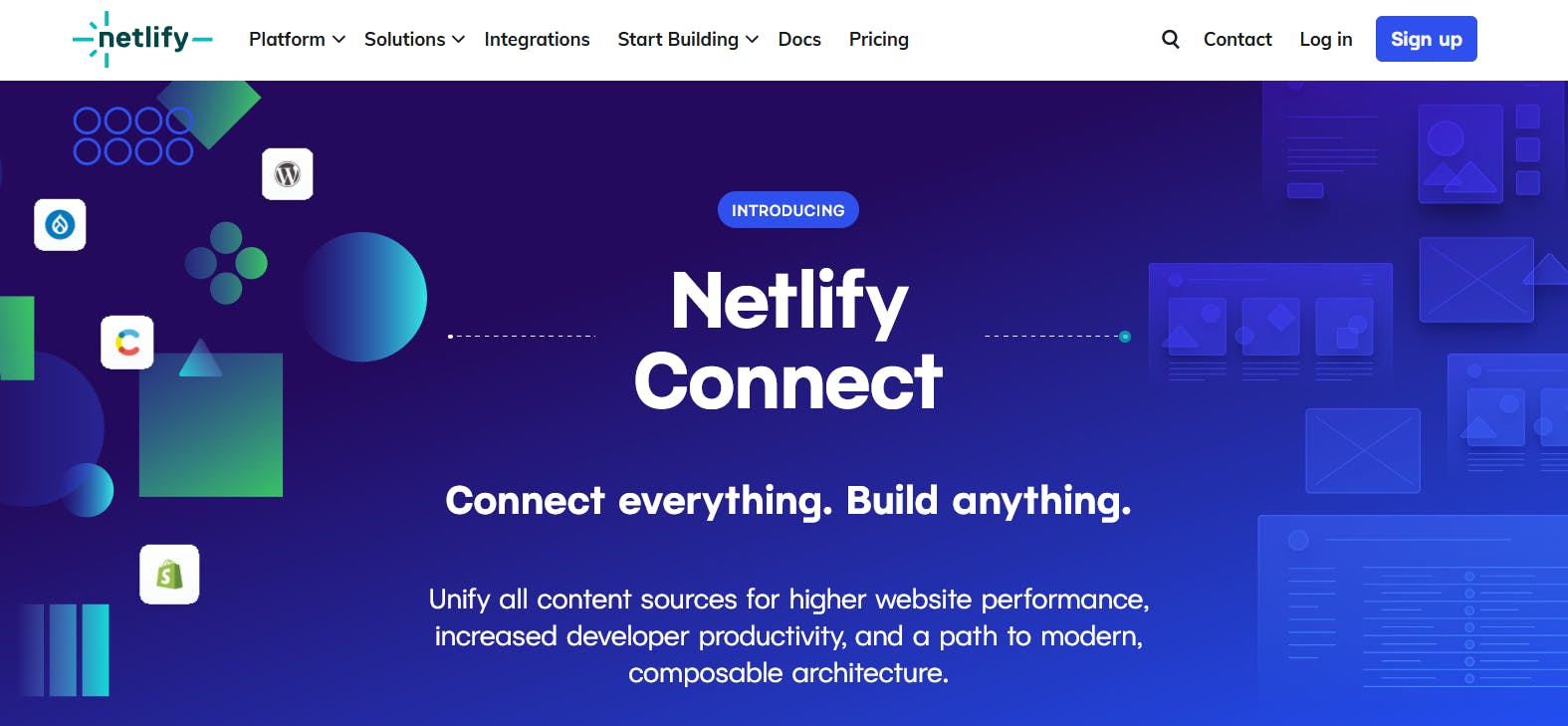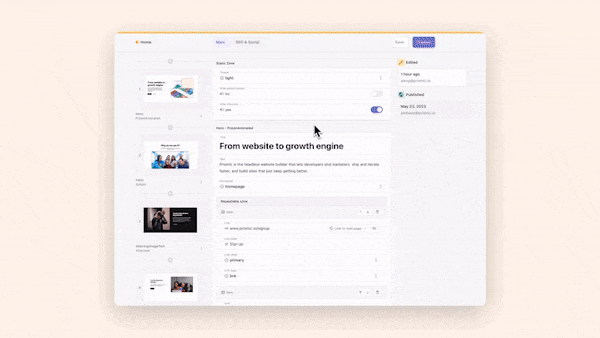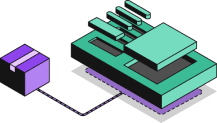Vercel vs Netlify: Compare Jamstack Hosting and Deployment

The Jamstack (JavaScript, APIs, and Markup) architecture has revolutionized how we build websites and applications. We can enjoy several benefits, including increased speed, security, and scalability, by building with this architecture.
However, the building process does not end with choosing the right architecture. We must also deploy and host our websites so anyone can access them. Two options stand out in the developer ecosystem when it comes to hosting and deploying Jamstack websites: Vercel and Netlify.
Are you currently deploying a Jamstack website or evaluating between these two platforms to know which one to work with for your next project? We have you covered. In this article, we will compare Vercel and Netlify, exploring their strengths and weaknesses to help you make an informed decision that aligns with your needs and requirements.
What is a Jamstack hosting platform?
A Jamstack hosting platform is a platform-as-a-service (PaaS) cloud-based hosting solution for Jamstack websites and applications. Behind the scenes, the platform works with third-party hosting services like AWS and Google Cloud Platform to abstract the complexities and technicalities of cloud-based hosting.
Jamstack hosting platforms integrate with many popular frontend technologies such as React, Next.js, Vue.js, and Remix.
A great thing about these platforms is that they provide direct integration with version control systems (VCSs) like GitHub and Bitbucket. This means they can connect directly to a project’s repository, take its source code from that repository, build the project, and then host it.
After hosting, the platform distributes the project across its data centers and content delivery networks (CDNs), ensuring faster website loading times and a seamless user experience. The best part is that the hosting platform fully automates the building, hosting, and distribution process.
We can streamline our deployment and hosting processes by using Jamstack hosting platforms because they eliminate the need for creating and maintaining hosting infrastructure from scratch.
Understanding the Jamstack development process
The Jamstack is not a technology. Rather, it is an architectural approach for the web that decouples the frontend or web experience layer from the backend, data, and business logic. The Jamstack shifts from monolithic development patterns to modern architecture that provides a richer experience and greater performance while easing the pain points that come with legacy technology.
The Jamstack development process emphasizes pre-rendering and caching content, then serving it through a CDN to deliver fast and efficient websites. It also involves the integration of APIs for dynamic functionality.
This architecture pattern provides improved performance, greater scalability and security, richer user experience, and better Core Web Vitals (CWV). It also facilitates the separation of concerns and allows frontend and backend developers to focus on the user interface and data and business logic, respectively.
The three pillars of Jamstack development are JavaScript, APIs, and Markup.
- JavaScript: JavaScript is used to enhance the user experience and add interactivity to the website. It can be used to handle dynamic content, perform client-side rendering, and interact with APIs.
- APIs: APIs provide a way to connect different services and retrieve data. In the Jamstack architecture, APIs are often used to fetch data from databases or external services and integrate it into the static website.
- Markup: Markup refers to the HTML, CSS, and other static files that make up the website. These files are generated during the build process and can be served directly to users.
What is Vercel?

Vercel, previously known as ZEIT, is a popular and comprehensive PaaS solution for deploying, hosting, and scaling Jamstack websites. It offers seamless integration with frameworks like Gatsby and Svelte, as well as other major static site generators.
Vercel also offers source-code support and allows integration with VCS solutions like GitHub and GitLab. We can serve websites using a free vercel.app domain or use a custom domain.
Besides being a well-known Jamstack hosting solution, Vercel is also the company behind Next.js, one of the leading React-powered frameworks for building server-rendered applications. The tight relationship between Vercel and Next.js has made it a popular choice for many developers in the React ecosystem. Vercel’s ease of use, speed, and ability to handle considerable amounts of traffic also contribute to its popularity.
As of this writing, over 603k websites use Vercel as their hosting provider, with over 476k still actively using Vercel.
Features of Vercel
Vercel’s features include:
- Edge functions
- Website analytics
- Speed insights
- Integrated DDoS protection
- Automatic SSL
- Image optimization
- Global edge network
- Custom domains
- Fast edge servers for optimal performance
- Continuous integration and continuous deployment
- Automated testing
Deliver a fast website with a visual Page Builder
Prismic is a headless solution, with a visual Page Builder for your marketing team to release pages independently
What is Netlify

Just like Vercel, Netlify is a powerful and user-friendly PaaS provider for building, deploying, and managing Jamstack websites. It offers comprehensive tools for developing websites, including continuous deployment, serverless functions, form handling, and user identity management.
While Netlify allows us to work with custom domains, it also provides a free netlify.app domain. It has a global CDN, which ensures fast and secure content delivery regardless of a user’s location. It follows the Jamstack architecture, which enables faster load times, enhanced user experience, and better SEO.
Netlify is one of the most prominent Jamstack hosting platforms available today. As of this writing, over 759k websites use Netlify as their hosting provider, with over 517k of those websites still actively using Netlify.
Features of Netlify
Netlify’s features include:
- Enterprise team management
- Edge Functions
- Deploy previews
- Netlify edge CDN
- Forms submission management via Netlify Forms
- User authentication via Netlify Identity
- Active DDoS mitigation
- Website analytics
- Split testing
- Custom domain
- SSL certificates
Vercel vs Netlify: a detailed comparison
Vercel and Netlify have some similarities and differences. Let’s explore them in detail.
Similarities
CI/CD
Vercel and Netlify provide powerful and effortless integration with Git repositories and support automatic and continuous deployment workflows. This means that when we make any changes to a repository, the platforms can automatically build and deploy the changes to the live website.
Content Delivery Network
Both platforms leverage a global content delivery network (CDN) to ensure fast and reliable delivery of content to users worldwide. The CDN caches static assets and serves them from the edge locations closest to the user, minimizing latency and improving overall website performance.
Serverless Functions
Vercel and Netlify offer support for serverless functions, which allow us to run backend logic without managing servers. While both platforms offer serverless functions, Netlify supports functions written in JavaScript, TypeScript, and Go. On the other hand, Vercel supports functions written in Node.js, Go, Ruby, Python, JavaScript, and TypeScript.
Developer Experience
Both platforms prioritize the developer experience and provide intuitive user interfaces, extensive documentation, and robust CLI (Command Line Interface) tools. They offer features like environment variables, build hooks, and deployment previews, which streamline the development process and make it easier to collaborate with team members.
Differences
Authentication
An interesting add-on feature that Netlify offers is Netlify Identity, a built-in authentication service for managing and authenticating users. While this is not a core service, it is a 'nice-to-have'. Vercel, on the other hand, does not offer any authentication functionality.
Form handling
Netlify provides built-in form handling functionality via Netlify Forms, which allows us to easily capture form submissions on your website. It provides a simple and intuitive interface to manage form submissions and can even send notifications to email addresses or integrate with third-party services. Vercel, on the other hand, does not have built-in form-handling capabilities. We would need to use external services or implement a custom solution to handle form submissions.
Pricing
Vercel and Netlify offer free plans with access to a limited set of features, including 100GB of bandwidth. Regarding pricing, Vercel has an advantage over Netlify because its free tier offers 6,000 build-time minutes every month, while Netlify offers only 300 build-time minutes monthly. Vercel’s cheapest paid tier costs $20/user/month, while Netlify’s costs $19/user/month.
Has no authentication functionality
Provides built-in authentication functionality via Netlify Identity
Has no form submission functionality
Provides built-in form submission functionality via Netlify Forms
Offers 6,000 build-time minutes per month
Offers 300 build-time minutes per month
Lowest paid tier costs $20 per month
Lowest paid tier costs $19 per month
Offers deep integration with Next.js
Does not offer deep integration with Next.js or any framework in particular
Supports serverless functions written in JavaScript, TypeScript, Go, Node.js, Ruby, and Python
Supports serverless functions written in JavaScript, TypeScript, and Go
Supports over 30 frontend frameworks
Supports over 30 frontend frameworks
Will you use Vercel or Netlify?
In conclusion, both Vercel and Netlify are excellent choices for Jamstack developers. As always, there is no one-size-fits-all solution. Instead, the platform you decide to work with ultimately depends on your specific requirements, preferences, and project needs.
Here are some things to remember when choosing between Vercel and Netlify.
- If you primarily work with Next.js, Vercel might be the better option due to its deep integration with Next.js.
- Netlify is a great hosting platform with additional features such as user authentication and form management.
- Ensure that the pricing tier for the platform you choose has all the necessary features your application requires.
Regardless of your choice, both platforms offer powerful features and excellent developer experiences to help you build and deploy Jamstack websites efficiently.
Try editing a page with Prismic
A visual page builder, configured to marketing team's needs. They can easily create on-brand website pages, release more, attract more visitors and convert quality leads.

FAQs
Stay on Top of New Tools, Frameworks, and More
Research shows that we learn better by doing. Dive into a monthly tutorial with the Optimized Dev Newsletter that helps you decide which new web dev tools are worth adding to your stack.






